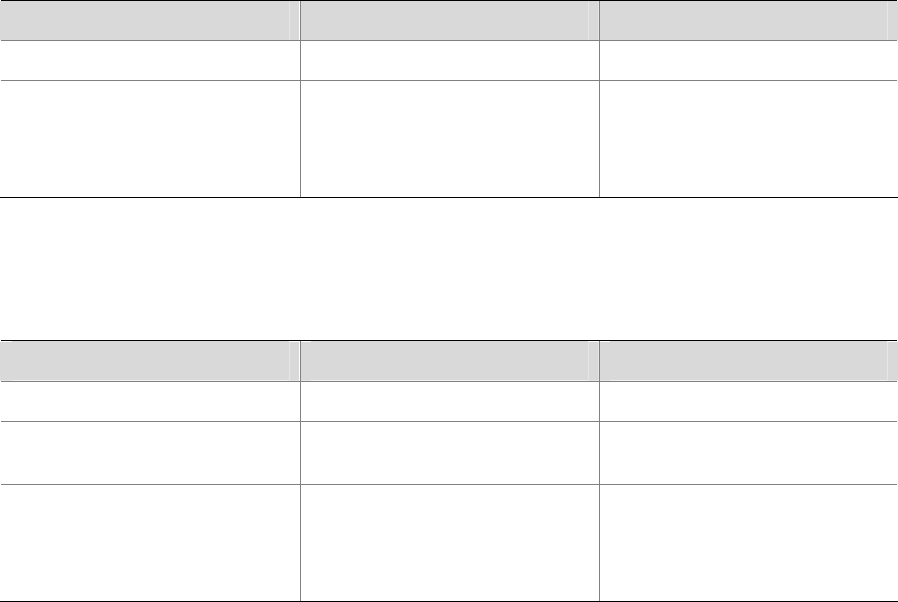
1-26
As the maximum transmitting rate parameter determines the number of the configuration BPDUs
transmitted in each hello time, set it to a proper value to prevent MSTP from occupying too many
network resources. The default value is recommended.
Configuration example
# Set the maximum transmitting rate of Ethernet 1/0/1 to 15.
1) Configure the maximum transmitting rate in system view
<Sysname> system-view
[Sysname] stp interface Ethernet 1/0/1 transmit-limit 15
2) Configure the maximum transmitting rate in Ethernet port view
<Sysname> system-view
[Sysname] interface Ethernet 1/0/1
[Sysname-Ethernet1/0/1] stp transmit-limit 15
Configuring the Current Port as an Edge Port
Edge ports are ports that neither directly connects to other switches nor indirectly connects to other
switches through network segments. After a port is configured as an edge port, the rapid transition
mechanism is applicable to the port. That is, when the port changes from the blocking state to the
forwarding state, it does not have to wait for a delay.
You can configure a port as an edge port in one of the following two ways.
Configure a port as an edge port in system view
Follow these steps to configure a port as an edge port in system view:
To do... Use the command... Remarks
Enter system view
system-view
—
Configure the specified ports as
edge ports
stp interface interface-list
edged-port enable
Required
By default, all the Ethernet
ports of a switch are non-edge
ports.
Configure a port as an edge port in Ethernet port view
Follow these steps to configure a port as an edge port in Ethernet port view:
To do... Use the command... Remarks
Enter system view
system-view
—
Enter Ethernet port view
interface interface-type
interface-number
—
Configure the port as an edge
port
stp edged-port enable
Required
By default, all the Ethernet
ports of a switch are non-edge
ports.
On a switch with BPDU guard disabled, an edge port becomes a non-edge port again once it receives a
BPDU from another port.


















